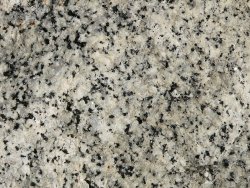
|
Granites may not be the most glamorous of rocks but they are the building blocks of Earth’s crust. This makes granites the 'goto' rocks when it comes to studying the geological history of our planet. As Michael Ackerson the lead author of the present study (Nature, 2018) points out: 'Granites record almost all of our planet's history -- from 4.4 billion years ago to today.' |
|
|
Granite is an igneous rock largely composed of quartz (anything between 20-60%) and at least 35% of the total is feldspar. Earlier research from the 1960s and 70s indicated that granite crystallizes at temperatures between 650 and 700 degrees Celsius (or between about 1,200 and 1,300 degrees Fahrenheit). Below 650 celsius granites have been assumed to be already fully crystallized. Traditional models on magma formation assume that magma is stored at high temperatures, largely as a liquid. More recent studies have proposed the existence of cold magma storage - volcanic rocks that are mostly at low temperatures with only relatively small pockets of shallow, hotter, eruptible magma. Those pockets of hot magma might have formed only decades or, at most centuries, before eruption.(Science, 2017). Because granites are the intrusive components of volcanic rocks, the structure and composition of granites often provide clues about the nature of silicic volcanism. Silicic volcanoes are some of the most explosive eruptions, throwing out magma rich in lighter elements such as silicon, oxygen, aluminum, sodium, and potassium. In the light of the new magmatic models, Ackerson and his colleagues decided to re-evaluate the temperatures needed to crystallize granites. They used recently developed Titanium-in-Quartz thermobarometry to study the crystallization of granitoids from Yosemite National Park. ('Granitoid' or 'granitic' refers to rocks which are like granite - ie coarse-grained igneous rocks containing quartz and feldspar which are similar in texture to granites but slightly different in composition or origin.) A Titanium-in-Quartz (TitaniQ) thermometer measures the amount of titanium in quartz at different temperatures. (Titanium is one of many trace elements which can substitute silicon in quartz). But titanium is particularly useful because its concentrations in metamorphic and igneous quartz are relatively high, and therefore easily measured. Also, titanium can substitute for silicon without having to be charge balanced by coupled substitution of another element. Both silicon and titanium are tetravalent cations. The TitaniQ thermometer was calibrated in 2006 by Wark and Watson and has a number of advantages over other thermometers in use today:
By applying the TitaniQ thermometer to the quartz crystals in Yosemite National Park samples of granitoid, Ackerson and his colleagues showed that the samples crystallized at temperatures of 474–561 degrees Celsius (or 885 and 1,042 degrees Fahrenheit) - up to 200 degrees cooler than previously thought possible for granites. Those results not only support the cold magma storage theory. If these results are supported by further data,then it may be necessary to re-evaluate theories about conditions on the planet when the Earth's crust took shape. Credit: Photo by Photo by David Monniaux. Journal Reference: | |
| _______________________________ | ||||
| Home | | | Shopping | | | Database |
© Biscuit Software 2004-2018
All rights reserved